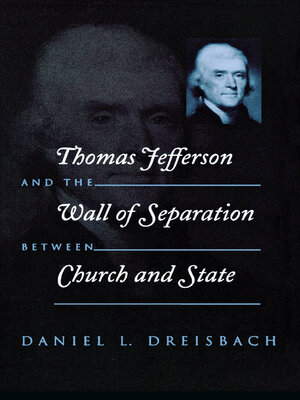Thomas Jefferson and the Wall of Separation Between Church and State
ebook ∣ Critical America
By Daniel Dreisbach

Sign up to save your library
With an OverDrive account, you can save your favorite libraries for at-a-glance information about availability. Find out more about OverDrive accounts.
Find this title in Libby, the library reading app by OverDrive.



Search for a digital library with this title
Title found at these libraries:
| Library Name | Distance |
|---|---|
| Loading... |
The origins, controversial uses, and competing interpretations of Jefferson's famous remark—"wall of separation between church and state"
No phrase in American letters has had a more profound influence on church-state law, policy, and discourse than Thomas Jefferson's "wall of separation between church and state," and few metaphors have provoked more passionate debate. Introduced in an 1802 letter to the Danbury, Connecticut Baptist Association, Jefferson's "wall" is accepted by many Americans as a concise description of the U.S. Constitution's church-state arrangement and conceived as a virtual rule of constitutional law.
Despite the enormous influence of the "wall" metaphor, almost no scholarship has investigated the text of the Danbury letter, the context in which it was written, or Jefferson's understanding of his famous phrase. Thomas Jefferson and the Wall of Separation Between Church and State offers an in-depth examination of the origins, controversial uses, and competing interpretations of this powerful metaphor in law and public policy.







